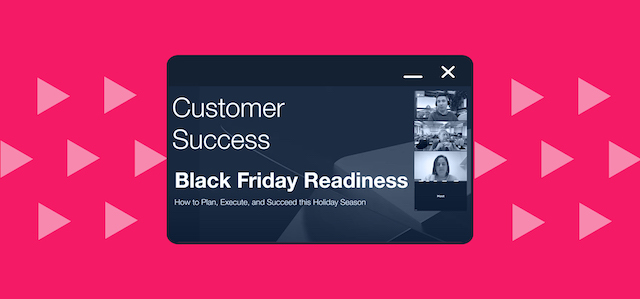
Nowadays, people can do anything from their phones. It really is the appeal of it: technology that helps you right in the palm of your hand. Today there are different applications for food delivery, grocery shopping, socializing, car services, investment banking operations, to quote a few activities. My bet is that you have at least two different options downloaded on your phone for all of these and, trust me, you’re not alone.
But is it possible for one single app to offer all of these services at once, without switching to a different app? Yes, it is, and the ones that do it are called super apps.
In China, apps like WeChat are already dominating the market and the world is surely following this trend and leading to what we call the race for superapps. Data, advanced technology and innovation are fueling companies’ development of apps that are consistently more complete and more convenient to the end customer. Join us on the race for the superapp.
What is a super app?

The answer to what is a super app can vary depending on where you look it up, but basically it is a platform developed by a company that offers various services under one umbrella, competing with the main screen of the smartphone. It’s almost like a building where you can get a range of services, from shopping experiences, banking services, food, payments and, sometimes, even social connection.
A classic example when trying to understand super apps is WeChat, a Tencent app from China. It is the fourth most used app in the world, with 1,2 billion monthly users, behind WhatsApp, Facebook and Facebook Messenger. Just for reference, Instagram is one of the most popular apps worldwide and has 1 billion monthly users, competing very closely with the Chinese giant, but just not there yet.
WeChat started as a social messaging app but, due to a surge in popularity and also the need to increase revenue, it started to expand the services offered and eventually became the go-to app for literally everything. Money transactions, payments, social network, cab services, food delivery, marketplace shopping and more. It became so big it caught the Chinese government attention and now also works as identity documentation.
Though WeChat is the best example of a superapp, we know that China is a one of a kind case of technology. This is why, when it comes to analysing super apps in the West, the criteria that applies to WeChat becomes inapplicable.
Here at VTEX, we consider super apps as any kind of app that has more than one pattern function. A good example is the Uber app: it started off as a car services app, but gradually evolved into UberEats (food delivery service) and even Uber Flash (courier and shipping service). Uber is considered a super app because it integrates customer data and seamlessly offers three different services in a single application.
But, the question that remains is: with this trend coming to a bigger market, will every app eventually become a super app? Does everyone need to become one? Let’s take a look at the benefits of super apps, the current scenario of this market and how VTEX clients are working their way into this world.
Why choose the super app route?
With people spending even more time on their mobiles, an average of 4.2 hours a day, according to App Annie’s 2021 State of Mobile research, it is crucial for apps to offer as many services as possible that are available.
According to that same report, there was a 7% YoY growth on new app downloads, jumping to 218 billion in 2020. That is why it is more important than ever to keep users on your app – you and all other companies are fighting for their attention in an ever growing mobile-first world.

Besides that, there are also a few benefits of becoming a super app:
- More downloads, more traffic and, therefore, a bigger brand presence with more clients coming in. Consequently, that also brings more brands or mini-apps to the main app service. Also, the more services you offer, the longer the customer stays on the app.
- Customer data is tech gold. For instance, if a customer ordered a car through your application and entered their home address, this same address can be used to deliver food or even register an address for the delivery of a product purchased via marketplace. You can use that data seamlessly through the different services offered by the super app.
- More contact with the customer. By having an app, and not only a super app, you get four new contact fronts: desktop, mobile, iOS and Android. Your client is able to reach you wherever they are with little resistance.
- Relevancy. In these times, relevancy is a keyword for businesses everywhere, specially in the digital world where mobile attention span relies heavily on what is being offered and how the app works. So, make sure to have a friendly interface and offer the most out of the available services.
When thinking of building a super app, though, brands and companies need to ask themselves: “Am I relevant enough to become a super app?” and “Why should I do that?”, given that it is no easy task.
How do super apps work?
Behind the scenes, composable commerce and headless technology are key players in super apps around the world. They are usually PWAs, which stands for progressive web app; it means that they are different from native apps because they work in basically every device or operational system and they can perform better, with more functionalities and APIs. APIs, or Application Programming Interface, allow different apps and services to work together in various ways. The idea is to use this to go beyond the product, building an entire ecosystem within the app.
While plugging and adding APIs together, super apps are born by maintaining data and the central information connected through all different levels without disrupting customer journey, making this path, in fact, even better and seamless.
Inter: The Brazilian super app taking the competition by storm

Recently, VTEX Professional Services team was faced with the challenge of gearing up Inter’s app. Inter is a digital bank, offering credit solutions, money withdrawal, transfers, loans and even business accounts, amongst other services. But what started as a simple banking operation has grown to so much more.
After implementing an investment platform connected to the client’s credit account, Inter joined forces with VTEX and created a marketplace called Inter Shop, the platform has hit $200 million USD in sales. To make it more appealing to clients, Inter Shop also offers cashback on all stores participating in the marketplace, or even a higher percentage on credit card limit so that the client can shop without over-drafting their savings.
All of this without having to input credit card details or even worry about data being stolen. How much safer can you be if not on your own bank account app?
It doesn’t stop there. Inter is on the path of growth, now offering a beta version of a delivery service, where clients don’t even need to input their addresses and cashback is also offered. Inter clients are also able to book trips and, at the same time, book vacation insurance and even exchange currency. Food, shopping, insurance, loans, bank transactions… It’s all there and there’s still more to come!
The future is super
Inter is not the only example. Apps like PicPay, Uber, Google Maps, Carrefour and Rappi – that recently launched its own digital bank – are just some that are finding their way in the super app universe, using technology and innovation as tools to get a head start on the race and also on the consumer’s minds.
As these services grow more and more, the main takeaway from all the benefits and the boom of super apps is that it’s time to focus on offering a more diverse range of services or start partnering with those who do.













